Guest Speakers
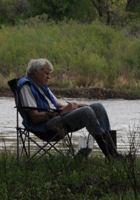 Philip J. Currie
(University of Alberta)
Philip J. Currie
(University of Alberta)Dr. Philip J. Currie, Professor, Canada Research Chair at the University
of Alberta in the Department of Biological Sciences.
Former Curator of Dinosaurs at the Royal Tyrrell Museum of Palaeontology, and Adjunct Professor University of Calgary.
He got his BSc at the University of Toronto in 1972, and his MSc and PhD at McGill in 1975 and 1981. He is a Fellow of the Royal Society of Canada (1999) and a member of the Explorers Club (2001). He received an honorary degree from the University of Calgary in 2008. He has published more than 160 scientific articles, 140 popular articles and twenty books, focussing on the growth and variation of extinct reptiles, the anatomy and relationships of carnivorous dinosaurs, and the origin of birds. Fieldwork connected with his research has been concentrated in Alberta, Argentina, British Columbia, China, Mongolia, Indonesia, South Africa, and the Arctic and Antarctica. Sir Frederick Haultain Award (for significant contributions to science in Alberta), 1988. American Association of Petroleum Geologists, Michel T. Halbouty Human Needs Award, 1999. The Michael Smith Award in 2004. ASTech Award in 2006. The Alberta Order of Excellence, 2010. The Explorers Club (Canadian Chapter) Stefansson Medal, 2011. The Explorers Club Medal, and the Royal Canadian Geographical Society Gold Medal, 2012. Since 1986, he has supervised or co-supervised 32 MSc and PhD students at the Universities of Alberta, Calgary, Copenhagen and Saskatchewan. Currently he is supervising nine (2 undergrad, 2 MSc, 4 PhD and one postdoctoral) students at the University of Alberta. He has given hundreds of popular and scientific lectures on dinosaurs all over the world, and is often interviewed by the press.
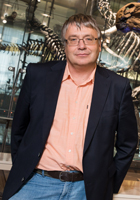 Pascal Godefroit
(Royal Belgian Institute of Natural Sciences)
Pascal Godefroit
(Royal Belgian Institute of Natural Sciences)
A Senior Scientist at the Royal Belgian Institute of Natural Sciences. Dr. P. Godefroit studies Asian and European dinosaurs, especially basal ornithischians and hadrosaurid dinosaurs. He also researches dinosaurs from Asian Arctic, Jurassic marine reptiles, and Late Triassic mammals from central Europe. He has led fieldworks in Belgium, France, Romania, Russia, China, and other parts of the world. His studies have been published as more than 100 scientific articles.
Speech title
Feather-like Structures and Scales in a Jurassic Neornithischian Dinosaur from Siberia
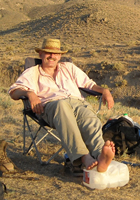 Martin Sander
(Bonn University)
Martin Sander
(Bonn University)Dr. P. Martin Sander, Professor of Vertebrate Paleontology, University of Bonn, Germany
Serving in various functions, P. Martin Sander has been at the Division of Paleontology of the Steinmann Institute of the University of Bonn since 1990, including over 10 years as the curator of its Goldfuß Museum. After his undergraduate work at the University of Freiburg in Germany, Dr. Sander obtained a Master's degree at the University of Texas at Austin in 1984 and a Ph.D. from the University of Zurich, Switzerland, in 1989. Since then, he has divided his research interests between the more traditional work in paleontology such as excavating and studying Triassic marine reptiles around the globe, and a more biological approach to extinct vertebrates, using the microstructure of fossil bone as a clue to life history and evolution, an interest he developed as a postdoc in Paris in 1990. An outgrowth of this work were seminal studies on the microstructure of reptilian, including dinosaurian, tooth enamel. A spectacular application was the proof, published in 2006, that similar to the Channel Island mammoth, dinosaurs were subject to island dwarfing. The study of dinosaur life history eventually led to the recognition that the largest of them all, the sauropod dinosaurs, represent a challenge to evolutionary biologists trying to understand their unique body size. In 2004, Dr. Sander was able to obtain major funding from the German Research Foundation (DFG) for the study of this topic and since then has headed DFG Research Unit 533 "Biology of the Sauropod Dinosaurs: The Evolution of Gigantism". This research unit has brought together expertise from all over Central Europe on topics as seemingly unrelated as materials science, animal nutrition, and biomechanics with a paleobiological question to focus on: What were sauropod dinosaurs like as living animals and how did they get so large? Dr. Sander and his colleagues have come to the realization that understanding dinosaur evolution opens up a new perspective on the group we belong to, the mammals. Since 1987, Dr. Sander has authored about 150 scientific papers and books on his research and since 1995 has trained many graduate students at the University of Bonn. He also has served as an external examiner on dissertation committees in many European countries. Dating back to his time as museum curator, Dr. Sander has felt the importance of communicating scientific results to the general public, resulting in countless media appearances and numerous invited lectures. A high point of these outreach efforts was the co-curation of a traveling exhibition entitled “Titans - The World’s Largest Dinosaurs. The Science Behind their Size” for the American Museum of Natural History, New York City, in 2011. He is the senior editor of “Biology of the Sauropod Dinosaurs. Understanding the Life of Giants” (Indiana University Press, 2011) and the editor of the scholarly ebook “Sauropod Gigantism – A Cross-Disciplinary Approach“ (PLoS 2013).
Speech title
Aging a Mamenchisaur from Xinjiang (China) Using Its Bone Microstructure
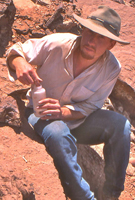 David J. Varricchio
(Montana State University)
David J. Varricchio
(Montana State University)
Dr. David J. Varricchio, Associate Professor of Paleontology, Montana State University, U.S.A.
Dr. D. Varricchio’s research interest includes dinosaur eggs and parental care, small non-avian and avian theropods, and taphonomy. His studies employ fossils mainly from North America and China, and have revealed possible brooding by some male theropods, parental care of a primitive ceratopsid dinosaur, and dinosaur burrowing behavior. He has published about 90 articles in scientific journals such as Nature and Science.
Speech title
Counting and Accounting for the Abundance of Dinosaur Eggs from Asia: a Case Study from the Tiantai
Basin, Zhejiang, China
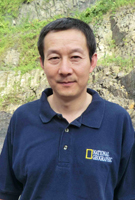 Xu Xing (Institute of Vertebrate Paleontology and Paleoanthropology)
Xu Xing (Institute of Vertebrate Paleontology and Paleoanthropology)
Born in 1969, a professor at the Institute of Vertebrate Paleontology and Paleoanthropology, Chinese Academy of Sciences (IVPP),
received B.S. from Peking University and Ph.D. from the IVPP, an Honorary Fellow of the Geological Society of London and an Honorary Researcher of the Natural History Museum of London. Prof. X. Xing is specialized in systematics and cladistics of Mesozoic dinosaurs. His recent researches focus on evolution and development of feathered dinosaurs to understand origin of birds. He has named more than 40 species of new dinosaurs discovered from various Middle to Late Jurassic localities in China and Gobi Desert in Mongolia. He has published over 100 articles in scientific journals such as Nature and Science.
Speech title Are All Dinosaurs Feathered?
